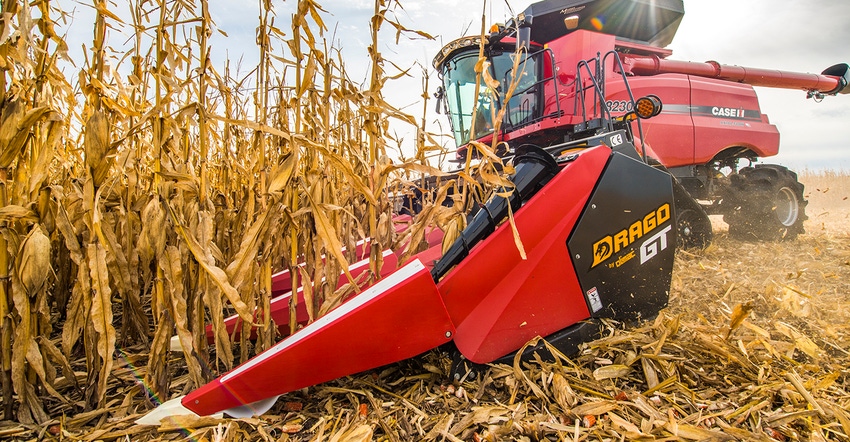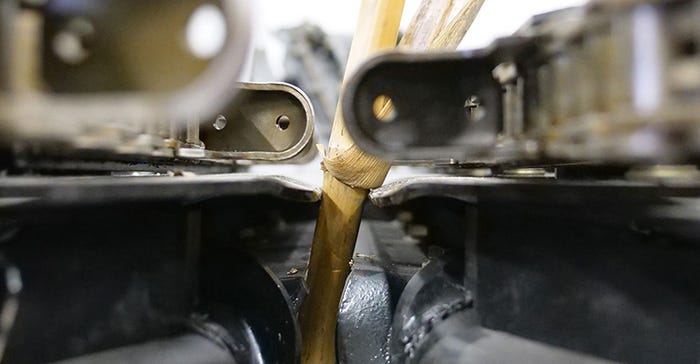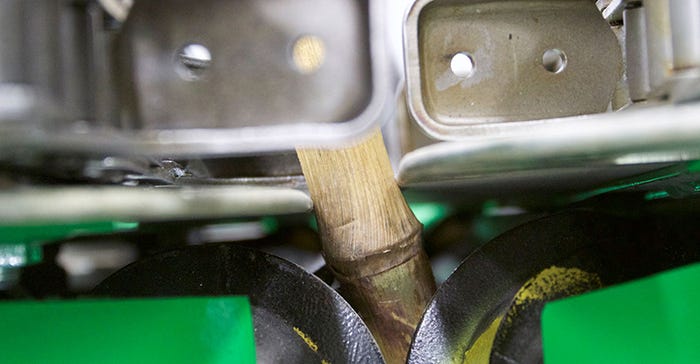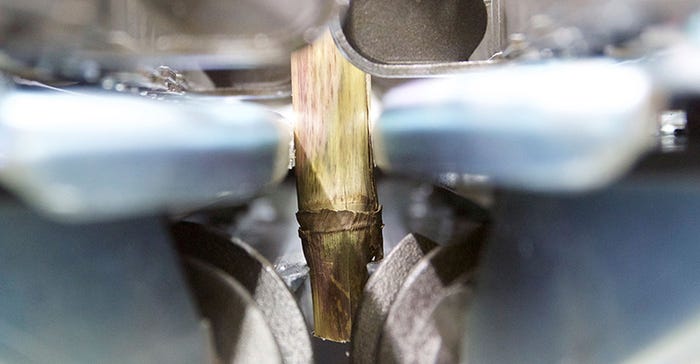July 1, 2019

Sponsored Content
University research has shown that as much at 60% of corn yield loss at harvest comes at the corn head – primarily through misadjusted deck plates. And stalk variability caused by planting in wet soils will exacerbate that potential loss.
Work by Graeme Quick at Iowa State University indicated as little as an eighth of an inch in excessive gap between deck plates and stalks could result in a four bushel per acre loss.*
“Having an optimum deck plate gap is crucial for capturing yield,” says Dustin Bollig, Northwest Iowa farmer and Marketing Director for Drago Corn Heads. “Even just a small gap can result in lost yield. And yet on the other hand, deck plate gaps set too tight result in stalk breakage, excessive trash entering the combine, and kernel loss out the back end.
Hydraulic controlled plates
“Unfortunately, the deck plates of most corn head brands are unable to adequately adjust to plant variability. One of problems is that hydraulically-controlled deck plates can only adjust to the same gap setting across the entire corn head, suggesting a uniformity that doesn’t exist – even in a good stand. “It’s just not an accurate option.”
“Growers shouldn’t assume that every row has the same-sized plants – or even that the gaps on a hydraulic corn head are the same for each row unit,” he adds. “Gaps and linkage can vary.”
He notes that Drago corn heads feature automatic, self-adjusting deck plates in each row unit that adapt to different stalk sizes row-to-row as well as within the row.
Bollig adds that while hydraulically controlled deck plates were a positive change from the fixed deck plates they replaced, “today they are an obsolete technology compared to what’s available.”
“Our goal is to educate producers on the value of deck plates that adjust to every plant in every row and every acre.”
More than self-adjusting plates
Bollig points out Drago deck plates include additional design and engineering features – including their shape and length that help capture yield.
“Drago deck plates are level with each other and feature rounded edges that remove ears while allowing plant material to easily run through them,” Bollig says. “The rounded edge allows trash to pass through with less resistance.”
“In contrast, the deck plates of some brands actually angle down to a slight ‘V’,” Bollig tells. “They did that to reduce trash entering the combine, but gravity will do what it does with loose kernels and not give them a chance to reach the combine.”



The deck plates of other brands have a straight edge that strips material from stalks, breaks off plants and deliver more trash. Once again, added trash in the combine results in kernel loss out the back.”
The benefits of QuadSuspensionTM
One other design feature that sets the Drago GT apart from any other corn head is QuadSuspension™ – deck plates with integrated impact-absorbing “ear shocks” designed to reduce ear bounce and butt shelling when ears strike deck plates during harvest.
“The technology makes sense from a physics perspective,” Bollig says. “And it makes a dramatic difference in the field, too.”
He notes that even though Drago knife rollers are designed to run slower than those of other corn head brands, the impact of ears striking deck plates is still significant. “QuadSuspension helps limit butt shelling when corn is dry, and reduces ear bounce when corn is wet. GT owners have told us that they know the ear shocks make a difference because they no longer get kernels pinging off their windshields during harvest.”
*Graeme Quick field research, Iowa State University.
About the Author(s)
You May Also Like




